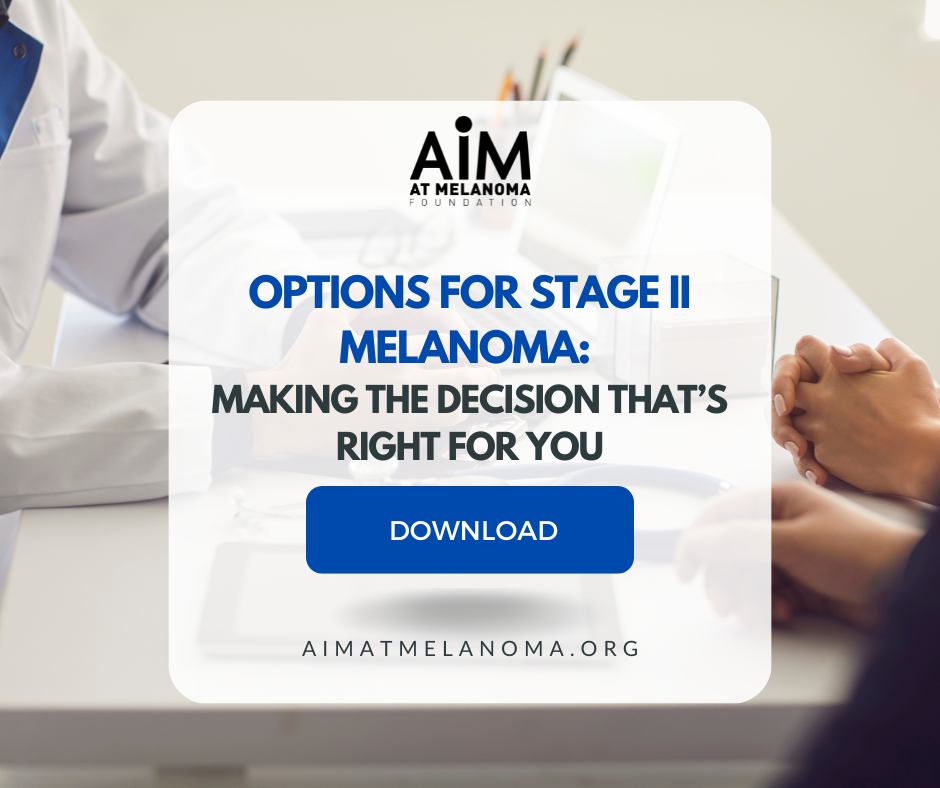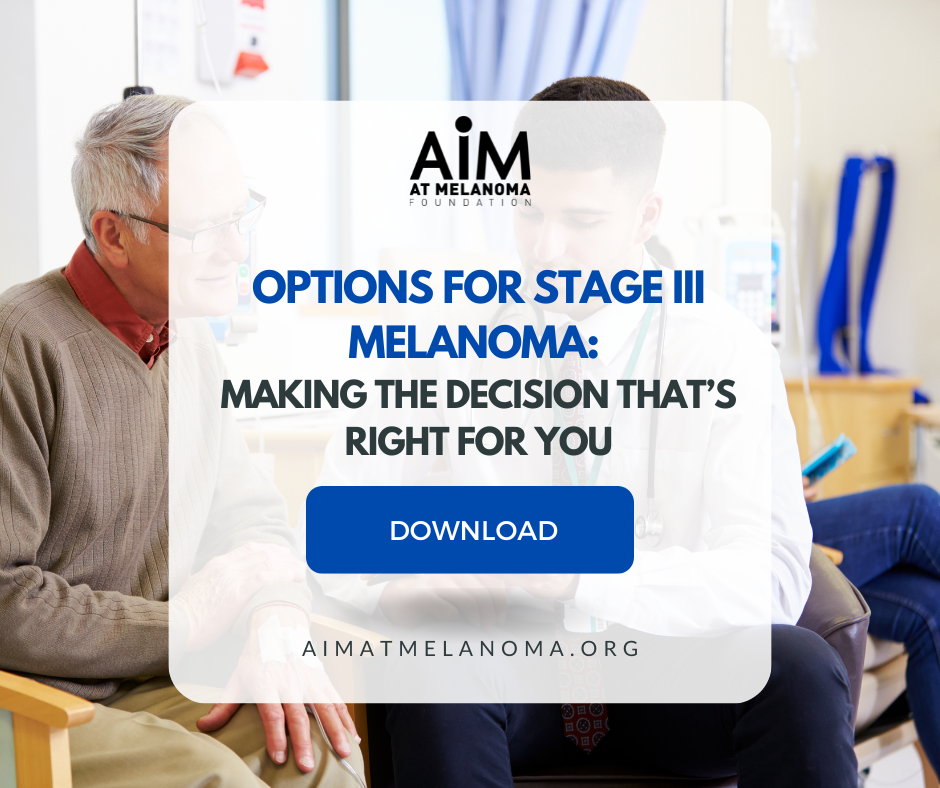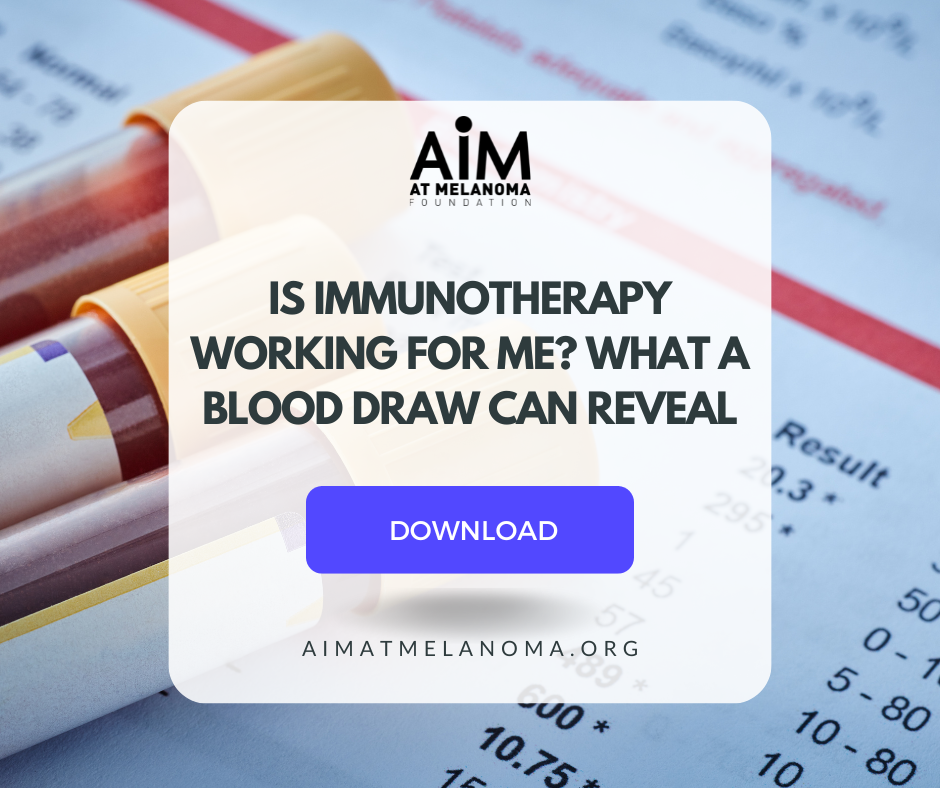
Resources for Patients with Melanoma
This page provides patient-focused PDFs designed to support understanding of treatment options and decision-making. It features information on a non-invasive sticker test for evaluating lesions, using ctDNA tests to monitor treatment progress, and detailed insights into melanoma across Stages II, III, and IV.
Resources like this for other cancers will be added in the future.
Is Immunotherapy Working for Me? What a Blood Draw Can Reveal
This downloadable guide, Is Immunotherapy Working for Me? What a Blood Draw Can Reveal, provides information for patients about the use of the Signatera™ test for monitoring the response to checkpoint inhibitors. The handout explains how cancer cells shed ctDNA and how the test can be used to monitor ctDNA in the blood. It explains how the test is set up using the patient’s personalized tumor characteristics and how that enables convenient blood monitoring over time. The guide also illustrates how the test can be used to address pseudoprogression, inform the choice of monotherapy vs combination therapy, and assist in the decision of whether to discontinue therapy.
For a primer on use of ctDNA testing for healthcare providers – click here.
Options for Stage II Melanoma: Making the Decision That’s Right For You
This guide is designed to support patients diagnosed with Stage II melanoma by providing clear, comprehensive information about treatment options. It empowers patients to make informed decisions in collaboration with their oncology care team. Presented in a Q&A format, the document features Dr. Jason Luke, Associate Professor of Medicine at the University of Pittsburgh Medical Center, explaining key topics, including an overview of melanoma, available therapies, and potential side effects.

Options for Stage III Melanoma: Making the Decision That’s Right for You
This guide offers valuable information for patients diagnosed with Stage III melanoma, outlining available treatment options in detail. It also provides a clear overview of the Stage III substages, long-term data on adjuvant therapies, and dedicated resources for caregivers.

Stage IV Melanoma Treatment Options: Making the Decision That’s Right for You
This guide is designed to support patients diagnosed with Stage IV melanoma by offering comprehensive information about their condition and available treatment options. It highlights the critical role of biomarkers, explains the pathology of the disease, and addresses the management of brain metastases. The guide also explores the value of clinical trials, discusses survivorship, and provides insights into advanced care planning. To further assist patients, it includes a curated list of helpful resources.


